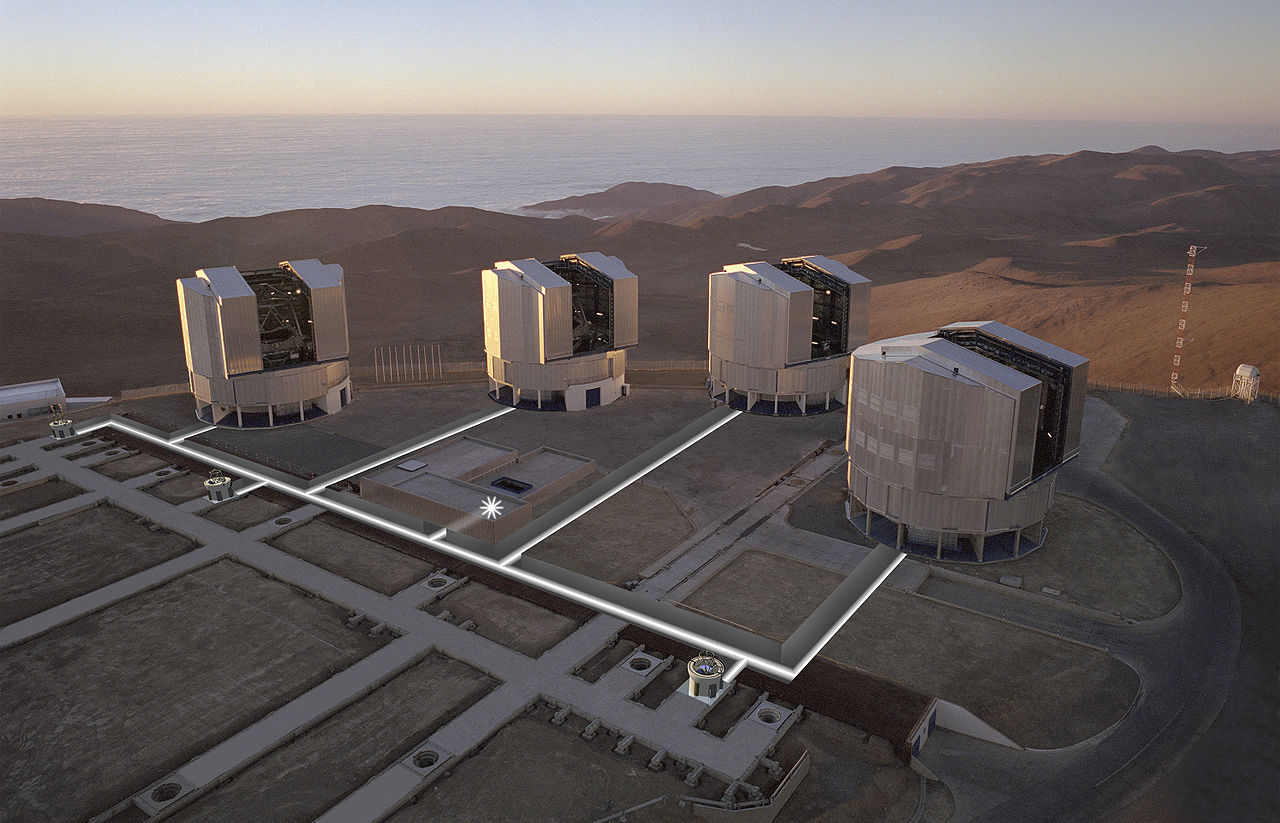Astronomers have completed a 3D map of 90,000 galaxies

The Very Large Telescope (Very Large Telescope, VLT) is located in Chile. It allows scientists to look into the corners of the Universe, which are extremely remote from Earth. Using this tool, astronomers implement several scientific projects, one of which aims to create a distribution of galaxies in two parts of the sky of the Southern Hemisphere.
Now the participants of this project reported the creation of a 3D map of 90,000 distant galaxies. The map has been compiled for a 24 square-degree sky portion. The depth of observation is very large and corresponds to the moment when our Universe was two times younger than the current moment, that is, about 6.5 billion light years. It may well be that some galaxies that scientists are observing in this sector are no longer there.
During the observations, astronomers worked with a multi-object spectrograph of visible light (eng. Visible Multi-Object Spectrograph, VIMOS ). It represents the visible images and spectra of up to 1000 galaxies, simultaneously in the area of 14x14 angular minutes.
')
Scientists have been compiling the map of distant galaxies for about 8 years. The measurement of the spectra of the mentioned 90,000 galaxies spent 440 hours of observational time on the VLA. This work is very ambitious and time consuming. In 2013, ESO announced that an international group of astronomers that performs a public review of the extragalactic space VIPERS ( VIMOS Public Extragalactic Survey ), obtained data for 60% of targeted galaxies. And now, three years later, the work is complete.
VIMOS allows astronomers to obtain a spectrum of distant galaxies. And an analysis of the redshift in this spectrum allows us to determine the rate at which the galaxy is moving away from the observer. Accordingly, this allows not only to find out the distance to the object, but also to make an accurate map of the location of galaxies.
Now the observation program is fully implemented, and astronomers have received the most extensive review of redshifts of all that have ever been performed with ESO telescopes. This survey provides data on the structures of the early Universe, with a huge amount of detail and spatial extent. Why do we need to observe the galaxies that existed many billions of years ago?
The fact is that the study of these objects helps to understand what are the laws of the distribution of matter in space on a huge scale. Also, observations using the VLT help to continue the study of the nature of dark matter in the early Universe (by the way, there is a hypothesis that explains the nature of the Universe without adding the concept of "dark matter"). Last month, the full data set was published. It is now available in standard form through the ESO archive . Astronomers are already working on analyzing the data and draw conclusions about how galaxies evolved since the early Universe, as well as find out the nature of the structural parts of the Universe such as fibers , clusters (clusters) and voids .
In December of this year, with the help of VIMOS and VLT, astronomers discovered the dwarf satellite of the galaxy Messier 83, which is nicknamed the South Pinwheel . In this galaxy, six supernovae were recorded. It is located 15 million years light years from Earth. The galaxy was discovered by Nicola Lackaille in 1752. Charles Messier included it in his catalog in 1781. In 2005, the GALEX orbital telescope registered a huge number of newborn stars on the outer limits of M 83. In 2008, the telescope discovered even more young stars, which, according to the conventional star formation model, should not be there . They are at a distance of 140 thousand light years from the center of the galaxy, while the diameter of the galaxy itself does not exceed 40 thousand light years.
In general, the current work of the VLT team, in particular, those scientists who are working on mapping the universe, helps clarify not only the structure of space, but also its evolution.

Very Large Telescope (Rus. Very large telescope, abbr. VLT) - a complex of four separate 8.2-meter optical telescopes (UT1-UT4): Antu telescopes, Kueyen, Melipal (Yepun) Yepun), combined into one system, built and operated by the European Southern Observatory. It is part of the Paranal Observatory on Cerro Paranal, at an altitude of 2635 m in Chile. VLT can operate in four modes: each telescope works autonomously, all telescopes work as a coherent interferometer and as a single telescope, which allows increasing the luminosity of objects.
Source: https://habr.com/ru/post/369991/
All Articles